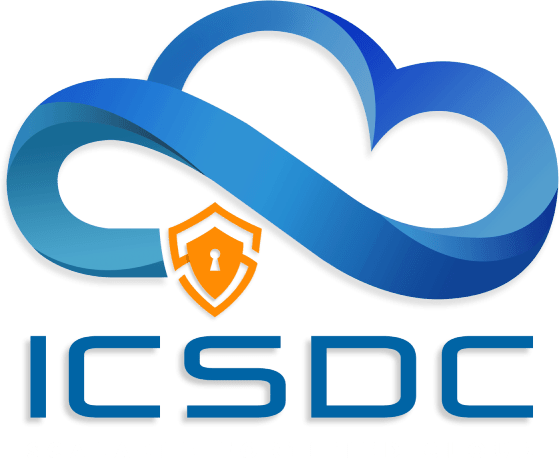
Migrating an Oracle Database is a transformative step, empowering organizations to modernize IT infrastructure, enhance database performance, and embrace cloud environments. This intricate process requires not only the transfer of data but also careful planning and strategic support to ensure continuity, scalability, and optimized functionality. A well-structured migration approach allows organizations to fully leverage new features while minimizing disruptions to operations.
This guide explores the critical phases of Oracle Database migration, covering Advisory, Planning, Execution, and Support, along with unique considerations for cross-platform and cloud migrations.
Advisory Phase
The Advisory Phase is crucial for understanding both the current state of the database and the broader business objectives of the migration project. This phase lays a solid foundation by addressing the following aspects:
- Current Environment Assessment
Begin by evaluating your current database environment, including hardware, software, and network configurations. This assessment offers a clear picture of your database’s existing state and identifies any infrastructure improvements that might be necessary. - Business Requirements
Clearly define the primary goals for the migration, whether they involve cost reduction, enhanced performance, or upgraded security features. Establishing well-defined objectives helps align migration decisions with organizational priorities, ensuring a successful outcome that meets both technical and business needs. - Feasibility Study
Evaluate different migration options—such as transitioning to the cloud or remaining on-premises—and assess them for both technical and financial feasibility. Key considerations include downtime tolerance, budget constraints, and long-term maintenance requirements, helping you choose the best approach for your organization.
For organizations considering cross-platform solutions or cloud migration options, platforms like Indian Cloud Services provide comprehensive cross-platform support and cloud migration guidance, ensuring compatibility and efficiency during the transition.
Planning Phase
With the Advisory Phase complete, it’s time to build a detailed migration plan. This phase involves creating a roadmap to reduce risks, streamline execution, and ensure a successful migration.
- Migration Strategy
Develop a tailored strategy based on your organization’s needs. This could involve a full database migration or a phased approach to minimize downtime. Having a clear strategy aligns resources and paves the way for smooth execution. - Data Mapping & Transformation
Carefully plan data mapping and any necessary transformations. These steps ensure compatibility between the source and target environments, helping to prevent data integrity issues and make the transition as seamless as possible. - Timeline & Resource Planning
Set specific milestones and assign roles to team members to track progress effectively. Defining clear timelines and responsibilities helps keep the project organized, avoiding bottlenecks and ensuring an efficient workflow. - Risk Management
Identify potential risks such as data loss, compatibility challenges, or unexpected downtime, and develop mitigation strategies. Backup and fallback plans provide a safety net, ensuring minimal impact on business operations if issues arise.
Execution Phase
The Execution Phase is where the actual migration occurs, involving comprehensive testing and coordination. Here’s a breakdown of key steps:
- Pre-Migration Testing
Begin with extensive testing in a staging environment that closely replicates the production setup. This allows you to address potential issues with data integrity and performance, setting the stage for a successful migration. - Data Migration
Execute the data transfer using appropriate tools, such as Oracle Data Pump or replication services. Ensuring secure, accurate data migration is critical to maintaining operational continuity and reducing post-migration adjustments. - Cross-Platform Migration
If migrating across platforms, address platform-specific challenges like endian conversion and compatibility adjustments. This step is essential for ensuring that the target environment functions seamlessly. The Cross-Platform Migration services offered by Indian Cloud Services specialize in compatibility checks and efficient cross-platform adjustments. - Post-Migration Testing
Conduct extensive post-migration testing to confirm data accuracy, performance, and compatibility. This final validation phase helps ensure the new environment meets all operational standards before going live.
Support Phase
The Support Phase ensures stability and optimal performance post-migration, focusing on continuous monitoring, user training, and ongoing support.
- Monitoring
Utilize tools such as Oracle Enterprise Manager to monitor database performance and system health. Regular monitoring allows proactive issue resolution and maintenance, minimizing potential disruptions. - User Training
Invest in user training to facilitate a smooth transition, reduce support ticket volume, and ensure high adoption rates among employees. Well-prepared users contribute to a more efficient post-migration phase. - Ongoing Support
Provide ongoing technical support to address any issues promptly. Scheduled updates, performance tuning, and security patch applications help maintain a secure, efficient database environment over time.
Special Considerations for Cross-Platform and Cloud Migrations
For organizations migrating to a new platform or the cloud, additional considerations help address unique challenges associated with these transitions.
- Platform Compatibility
Verify that the target platform supports all the source platform’s features, including hardware and software configurations. This step is essential to minimize functionality gaps and prevent unexpected issues post-migration. - Cloud Migrations
When migrating to the cloud, account for cloud-specific factors such as network latency, data security, and regulatory compliance. Ensuring alignment with data residency requirements and cloud provider certifications helps meet legal and operational standards. Learn more about Cloud Migration Services at Indian Cloud Services. - Upgrading to the Latest Version
When upgrading to newer Oracle Database versions, tools like Oracle’s Database Upgrade Assistant (DBUA) simplify the process by automating compatibility checks and optimizing performance. This helps reduce the risk of errors and ensures your system benefits from the latest features and improvements.
Additional Tips for a Successful Migration
A few additional strategies can contribute to the success of your migration project:
- Communication: Keep all stakeholders informed throughout each phase of the migration, ensuring a shared understanding of objectives and progress.
- Backup and Recovery: Establish a robust backup and recovery plan to protect against data loss and unexpected disruptions.
- Performance Tuning: Focus on database optimization post-migration to take full advantage of the new environment.
Conclusion
A structured approach to Oracle Database migration allows organizations to transition smoothly, whether moving to the cloud, upgrading versions, or switching platforms. Following this guide can help ensure a successful migration, from the initial assessment and planning stages to execution and long-term support. By prioritizing each phase and maintaining robust support systems, organizations can fully leverage Oracle’s capabilities for improved efficiency, scalability, and performance in their database environment.
